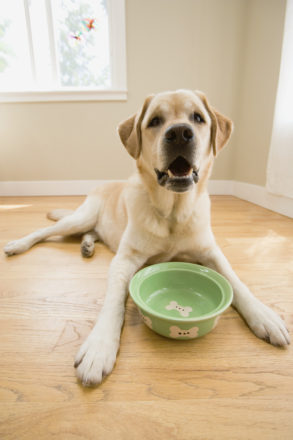
Now that you’re excited about feeding your dog a raw diet, the next question is how much raw food should I feed my dog per day?
The amount of raw food to feed your dog varies based on several factors:
- Weight
- Activity level
- Age
- Breed
- General health status
So first and foremost, it is very important to determine the factors that impact your dog’s specific nutritional needs.
In This Article
Specific Factors that Impact How Much Raw Food to Feed Your Dog
Weight and Body Condition
Is your dog fit or fat? It’s important to understand if your dog is currently underweight, overweight or just right? Your vet can check your dog’s Body Condition Score (BCS) which is like the Body Mass Index (BMI score) for people.
The BCS is a somewhat subjective rating that helps formulate the right diet and exercise plan that best suits your dog’s body, activity level, and lifestyle.
BCS scales can range from 1-5 or 1-9. The larger-scale assesses more subtle changes in weight, but either scale is acceptable. Using this scale, pets are scored from 1 to 9 with 5 /9 being the ideal body weight.
Here is an example of a Body Condition Score chart by the WSAVA Global Nutrition Committee. You can also download a PDF of the Body Condition Score chart to have for future reference.
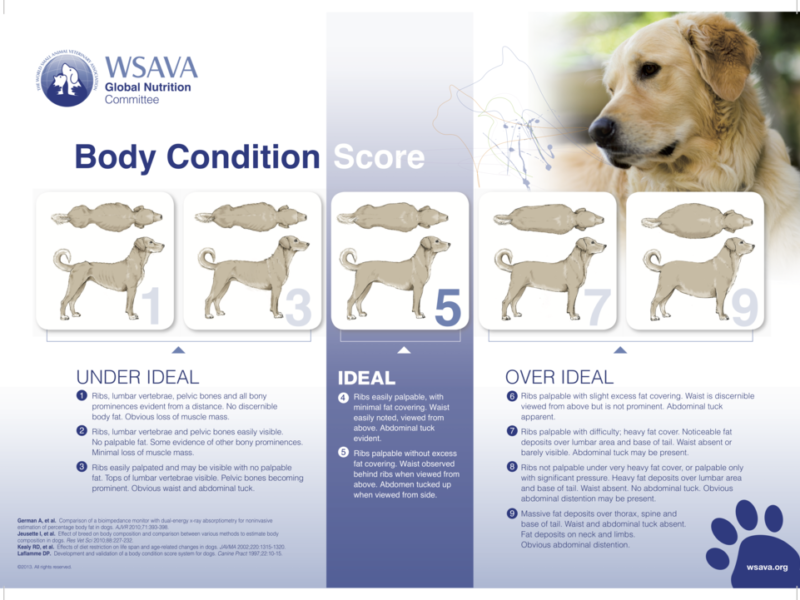
Video Tutorial to Determine Dog Body Condition Score
Here is a video if you would like to learn how to determine your dog’s Body Condition Score:
Other factors that impact how much raw food to feed your dog:
Activity Level
Is your dog highly active or a couch potato? It’s important to assess their activity level.
- Inactive – dogs spend their days inside and venture out for potty breaks
- Average- dogs get an hour or so of exercise per day
- Active – dogs receive exercise beyond the daily walk – hiking, biking, running, etc.
- Working dog: light, moderate, heavy
Age
What life stage is your dog at? Puppy versus adult dog versus senior dog. Different life stages have different nutritional requirements. As an example, puppies require more to eat.
Breed
What is the breed of your dog? Is your dog a small breed, large breed, active working dog breed, etc. While most breeds can be fed a similar diet, the amount will vary based on their metabolism and activity level to avoid obesity. You can review the AKC Breed Weight Chart for ideal dog weight by breed.
General Health Status
In general, what is the health status of your dog? Does your dog have any known health conditions that may impact their diet? Are they neutered or intact? Pregnant, etc. As an example, intact dogs require slightly more to eat.
Once you have a general understanding of the above factors for your dog, you can then calculate their nutritional needs.
Three Ways to Calculate – How Much Raw Food Should I Feed My Dog
- Calculating Body Weight
- Calculating Energy Requirements
- Eyeball the Amount
METHOD #1- Calculating Body Weight
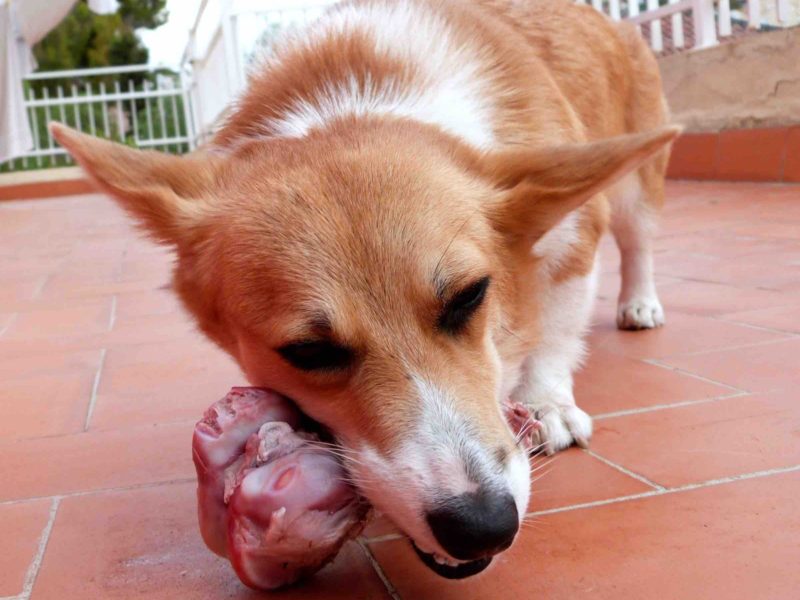 This method to determine “how much raw food should I feed my dog” is an easy calculation using body weight. It’s the preferred method for calculating raw food amounts for most new and experienced raw feeders because it’s simple and easy to understand.
This method to determine “how much raw food should I feed my dog” is an easy calculation using body weight. It’s the preferred method for calculating raw food amounts for most new and experienced raw feeders because it’s simple and easy to understand.
Adult Dogs:
Adult Dogs should be fed based on weight. Once you’ve determined your dog’s current weight and ideal weight, you know if they need to be fed to maintain their weight, lose weight or gain weight.
Based on a maintenance weight:
The average raw fed dog will require 2-3% of its body weight in raw food daily. 2.5% max is ideal in most cases.
This translates to about ½ pound of food for every 25 pounds that your dog weighs. So, for a 50lb dog that’s 1 to 1-1/2 pounds of food a day (depending on the factors discussed above).
To convert this to cups, the 50 lb dog would need 2 to 4-1/2 cups of raw food a day.
- 1 lb ground meat = 2 cups
- 1 lb chopped meat = 3 cups
The food amount should include all meat, bones, treats, and supplements (if used) combined.
This is a good starting point and then adjust up or down from there.
- Inactive – you may need to feed less than the 2%
- Active – you may need to feed a bit more than the 2.5% to 3% maximum amount to maintain a healthy weight
If your dog is overweight:
You may want to adjust its portions slightly and feed less than 2%.
Start at 2% and then gradually reduce as needed to 1.5% until your dog reaches the ideal weight. You should increase exercise too!. The amount of food consumed and the amount of exercise go hand-in-hand for weight loss. It’s no different than our weight loss battles.
You will notice that a more balanced weight is natural when you wean your dog off unhealthy grains, processed meats, and useless filler.
If your dog is underweight:
You may need to feed a bit more than the 3% to maintain a healthy weight. Depending on the severity of this (malnourished, emaciated rescue dog) please see your vet.
How Often Should You Feed Your Adult Dog
- Can be fed 1x or 2x a day. Matter of preference.
Senior Dogs:
The same rules apply for senior dogs. There is no real difference in the quantities you should feed your senior dogs. Just make adjustments as activity levels change to keep your senior dog at the ideal Body Condition Score.
Pregnant Dogs or Nursing Dam (female dog):
Not too different from adult dog raw feeding.
- Increase food at four weeks
- Increase 10-20% each week
- by 8th or 9th week, she’ll be eating up to 1-1/2 times the usual food
- 2-4 small meals – best depending on the size of the litter
- Reduce bone (if constipated) and add organs and pureed veggies as a laxative
- Energy demands increase with nursing – need 2-3 times regular food amount
Puppies:
 How Much Raw Food Should I Feed My Puppy?
How Much Raw Food Should I Feed My Puppy?
Puppies, especially larger breeds, grow rapidly and burn a lot of calories. As a result, they need to eat up to 10 % of their body weight in meat, bones, treats, and supplements (if used) every day.
If your puppy weighs 10 pounds, for example, feed it one pound of food, split up into 3 or 4 servings a day.
As your puppy ages, this percentage goes down until they are being fed the standard 2-3% of its ideal adult body weight in raw food daily.
Sample feeding adjustments for puppies:
- Age 2-4 months – feed 8-10% of current body weight
- 4-6 months – feed 6-8% of current body weight
- 6-8 months – feed 4-6% of current body weight
- 8-12 months – feed 3-4% of current body weight
- 12+ months – feed 2-3% of ideal adult weight
When to Start Feeding Raw Food to Puppies
- Best to keep puppies on mothers milk as long as possible.
- 4-5 weeks old: Usually on milk till 4-5 weeks old when teeth come in. Then can add food for puppies.
- Mom might regurgitate food for puppies – this is great as it’s predigested food.
- 4-5 weeks old: When adding food use mushy food and minced food and add broth or water to it.
- 6 weeks old: Can add small meaty bones like chicken necks. But you’ll want to help them out with some predigestion of your own so pound the necks up with a hammer or meat tenderizer to make them easier to eat.
- 6 – 7 weeks: Most puppies are eating what mom is eating only in smaller amounts.
- Puppies might need more calcium so give 15% bone (vs. 12% dogs)
- Make sure diet is high quality. Not more than 10% fat or there won’t be enough proteins and nutrients in the diet.
How Often Should You Feed Your Puppy
Energy requirements highest at 4-5 months. This is when most rapid growth is happening. Once adult teeth come in around this age – then the energy requirements slow down and they can start eating 2 meals a day. By a year of age, most dogs are considered ADULT and they can be fed as adults.
- Feed 4-5 times a day at first and then at 8 weeks feed 3 times a day.
- After adult teeth come in around 4-5 months can feed just 2x a day.
METHOD # 2 – Calculating Energy Requirements
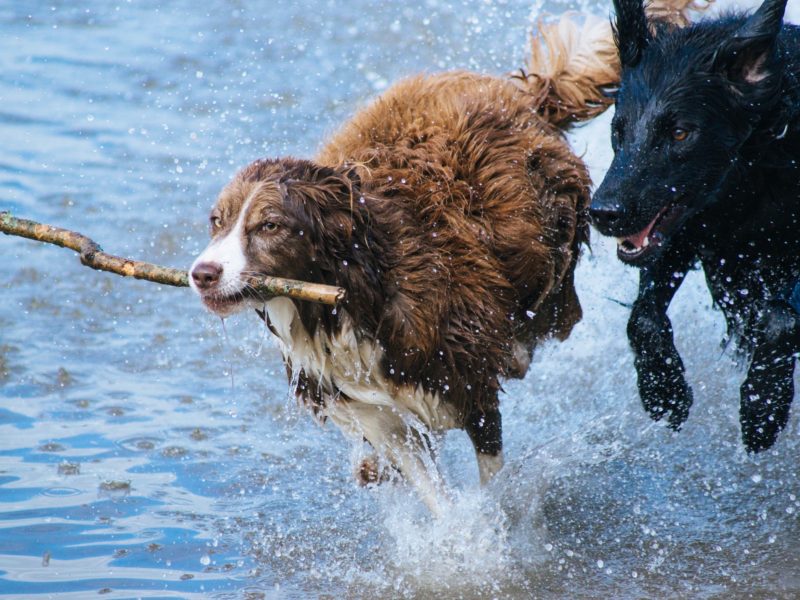 Calculating caloric requirements for dogs is difficult. For those who want to geek out, the detailed formulas are below.
Calculating caloric requirements for dogs is difficult. For those who want to geek out, the detailed formulas are below.
Step 1: Calculate your dogs Resting Energy Requirements (RER).
This can be calculated by multiplying the animal’s body weight in kilograms raised to the ¾ power by 70. (My head is spinning).
Here is the Resting Energy Requirements (RER) formula:
- Divide a dog’s body weight in pounds by 2.2 to convert to kilograms (kg)
- Resting Energy Requirement (RER) = 70 x (body weight in kg)^0.75.
Example:
45lb dog / 2.2 = 20.5 kg
RER = 70 x (20.5^0.75) = 674 kcal per day
For this calculation, you will need an Exponent Calculator to determine the number within the parentheses (20.5^0.75).
To determine this number, use the calculator link below and input your dog’s weight in kg in the BASE box (in this example 20.5) and input the factor of 0.75 in the EXPONENT box and then hit calculate to see the RESULT.
Exponent Calculator
In this example, the result/answer is 9.63419.
RER = 70 x 9.63419 = 674 kcal per day
Step 2: Calculate the Maintenance Energy Requirement (MER).
To do this, the RER is then multiplied by factors to estimate the pet’s total daily energy needs or – the amount used by a moderately active dog.
Here is the Maintenance Energy Requirement (MER) formula:
MER = (multiplier) x RER
Common Multipliers:
- Typical Neutered Pet 1.6
- Typical Intact Pet 1.8
- Weight Loss 1
- Weight Gain 1.7
- Light Work 2
- Moderate Work 3
- Heavy Work 6
- Growth (Less Than 4 Months) 3
- Growth (More Than 4 Months) 2
Example for Typical Neutered Dog:
45lb dog / 2.2 = 20.5kg
RER = 70 x (20.5^0.75) = 674 kcal per day
MER = 1.6 (typical neutered pet multiplier) x 674 = 1,078 kcal per day
The best advice is to use the formula as a starting point and monitor your dog’s weight and adjust calories up or down as necessary.
Calorie Needs Chart
I don’t know about you all, but my head is spinning right about now. That said, here is a handy chart which shows the Calorie Needs for an Average Healthy Adult Dog in Ideal Body Condition. These recommendations are for guidance one. Dogs are individuals and may require higher or lower caloric needs to maintain ideal body weight.
METHOD #3 – Eyeball the Amount – to Determine How Much Raw Food to Feed Your Dog
This is what most experienced raw feeders do in the long run. They start based on using the bodyweight calculation above and then eyeball based on weight.
The Body Condition Score is truly the key to how much raw food to feed your dog. If your dog scores a perfect 5 and looks healthy then you’re feeding him/her the proper amount. If not, then you need to make adjustments up and down accordingly.
Benefits of Fasting for Dogs
There are a number of benefits for fasting your dog and you should consider fasting your dog every week or two. Skipping one meal every week or two is very good to do.
Benefits:
- Removes waste and free radicals
- Reduces inflammation
- Removes waste from cells
- Can lengthen lifespan
NOTE: Don’t fast puppies (under 1-year) or sick adults.
A Quick Summary
While it may seem like there’s a lot that goes into determining how much raw food to feed your dog, simply put, an adult dog will eat approximately 2.5% of their body weight in raw dog food per day, with active dogs and puppies eating much more. Your veterinarian can help you determine the ideal weight for your dog and their current weight and then you can use the simple bodyweight calculation method and monitor and adjust accordingly.
PIN IT
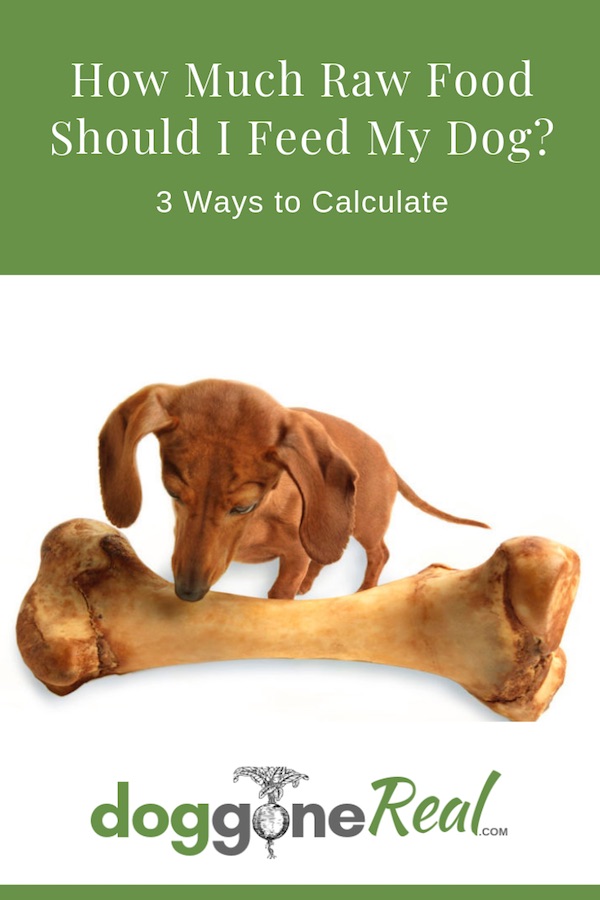

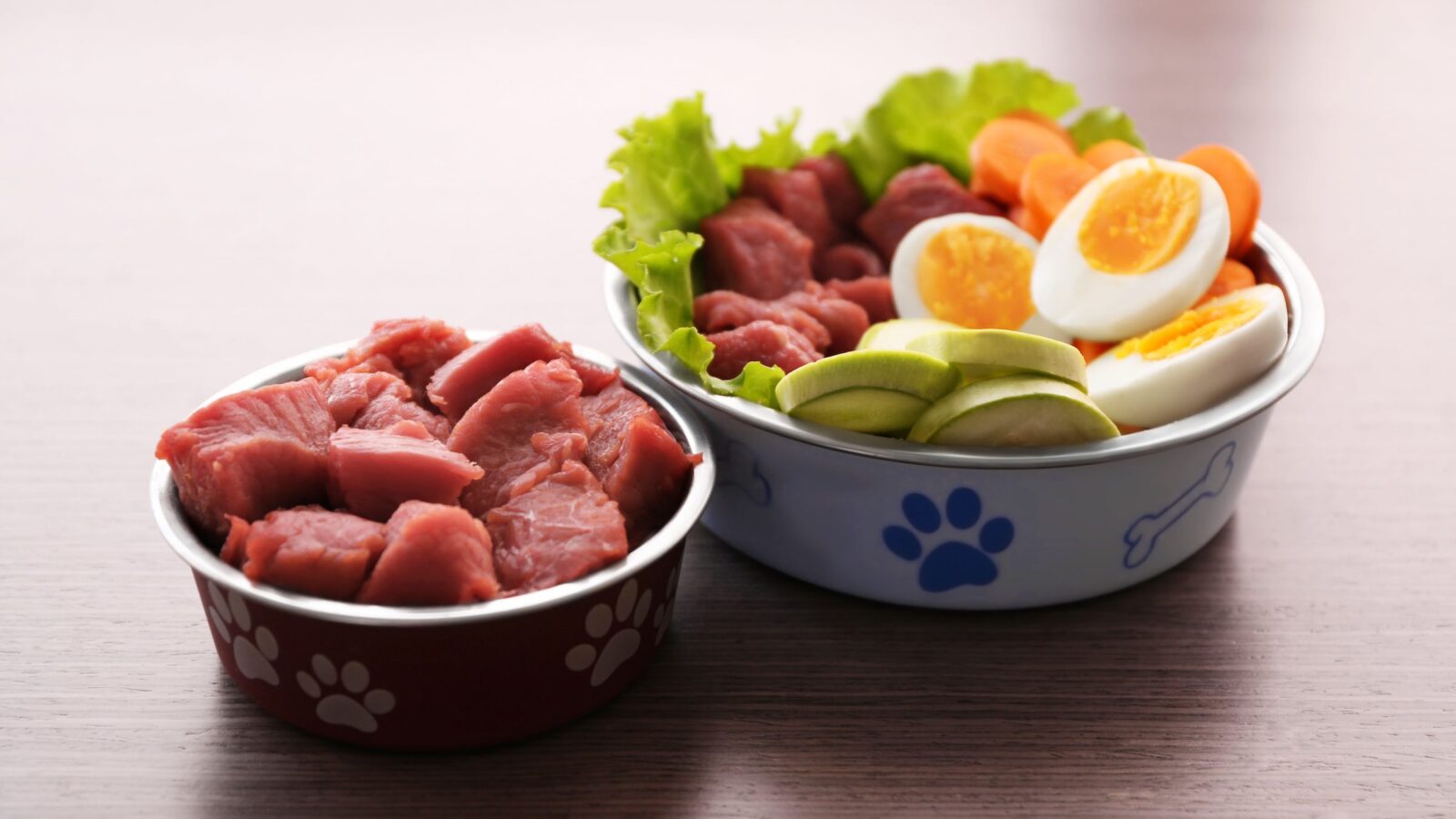
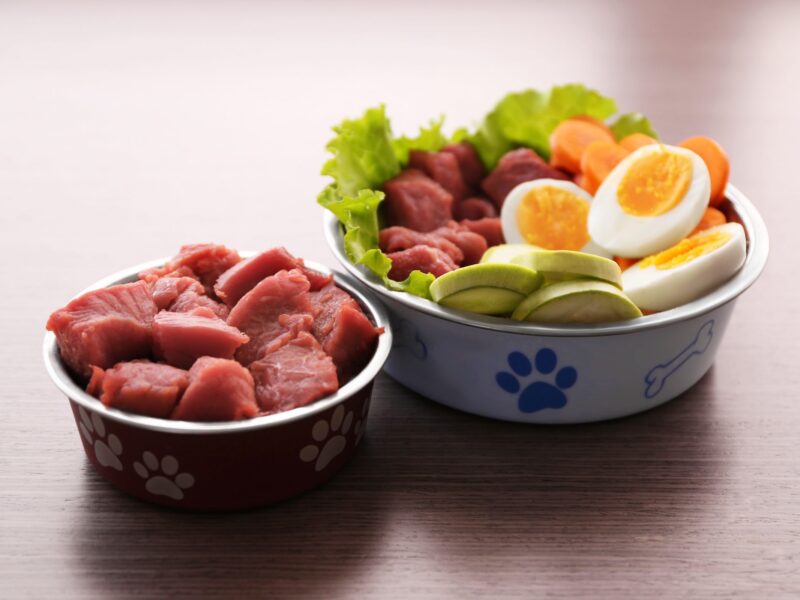
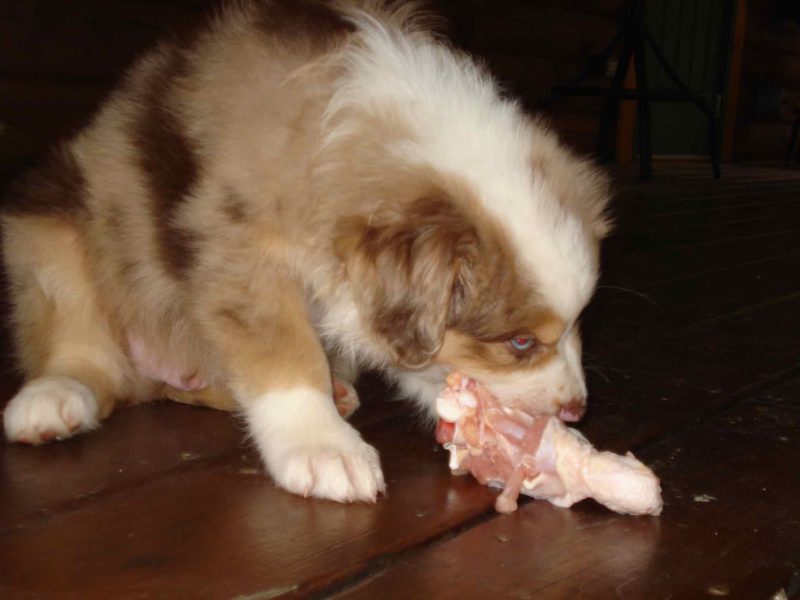 How Much Raw Food Should I Feed My Puppy?
How Much Raw Food Should I Feed My Puppy?


 Unique Gifts for Dog Lovers – Be the Talk of the Dog Park!
Unique Gifts for Dog Lovers – Be the Talk of the Dog Park!